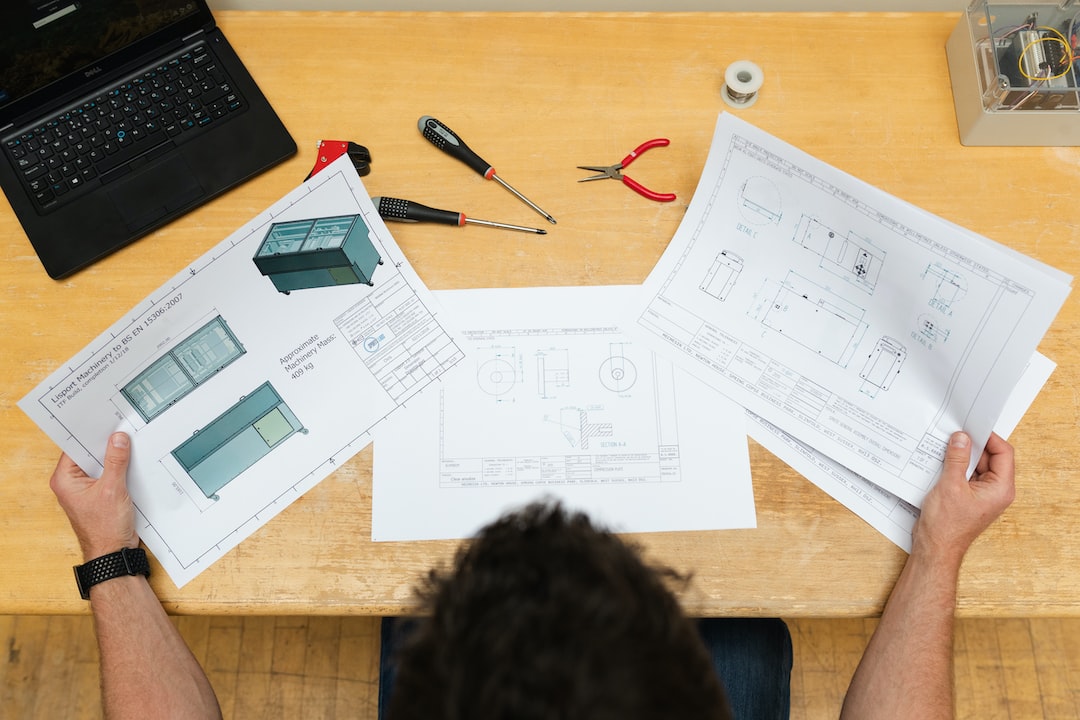Alright, fam, let’s dive into the electrifying world of electrical engineering 🚀. Now, I know what you’re thinking—“Isn’t electrical engineering all about boring equations and circuits?” Nah, not at all. We’re bringing a whole new vibe to it. Imagine getting the power to create stuff that makes the world work. You know, like your phone charger, Tesla cars, or even the WiFi router late-night gaming sessions depend on. That’s the kind of magic electrical engineering brings to the table. Ready to level up your knowledge? Let’s go!
What’s Electrical Engineering, Really?
Electrical engineering is that cool career path where you get to design and develop tech that powers our daily lives. Whether it’s the massive wind turbines on those green hills or the intricate chip that keeps your smartphone running, an electrical engineer had a hand in it. In layman’s terms, electrical engineering is all about electricity, electronics, and electromagnetism. It’s a game where currents, circuits, and voltages are your allies, and the endgame is to build stuff that works. Think of it like coding but with a physical twist. More engineering, less Netflix, but just as fulfilling when you get it right.
The OG Building Blocks: Essential Concepts
Okay, let’s dive deeper. You can’t just walk into the electrical engineering world and start building rockets or electric guitars without knowing the basics. So let’s break down some of the basic concepts you gotta grip before you start slaying circuits.
Voltage, Current, and Resistance: The Holy Trinity ⚡
First up—Voltage, Current, and Resistance, or what I like to call the Holy Trinity of Electrical Engineering.
Voltage (V) is like the push that moves electrons through a conductor. More voltage, more push! Imagine it as a water pump moving water through a pipe.
Current (I) is the actual flow of those electrons. It’s like the water flowing through the pipe thanks to that pump.
Resistance (R) is, well, resistance. It’s what slows down the current, much like friction in a pipe could slow down the flow of water.
Ohm’s Law is where these three meet up for brunch. The law says Voltage = Current × Resistance (V=IR). Get cozy with this equation because you’ll see it a lot.
Direct Current (DC) and Alternating Current (AC)
Flowing straight (DC) or back-and-forth (AC)—electricity can behave differently, and both current types are crucial depending on what you’re building.
Direct Current (DC) is like a straight-up, no-nonsense flow of electrons in one direction. Your phone and laptop thrive on DC, and batteries supply it.
Alternating Current (AC), on the other hand, is a bit more complex. Picture the current as a dance of electrons—this way, that way, repeat. AC switches direction many times a second. AC is what powers your home—yep, the outlets on your walls are all about that alternating life.
Circuit Types: Series and Parallel
Circuit time! Circuits are pathways that electric current follows, kinda like traffic routes. Think of Series and Parallel like different road maps.
-
Series Circuit: One-way traffic. If one component fails, the whole thing stops. All elements are connected end-to-end.
-
Parallel Circuit: Multi-lane highway. Multiple routes for the current. You’ve got backup lanes, so if one component fails, the rest keep going strong.
Understanding these is super important because how you set up a circuit can make or break your project.
Components You Need to Know: Resistors, Capacitors, and Inductors
You can’t build a fire playlist without knowing the tracks, right? Same goes for circuits. Let’s break down the big players:
-
Resistors: These guys are like the brakes on your circuit highway. They slow down the current, managing how much flows through. Easy to spot; they look like tiny tubes with color bands.
-
Capacitors: These are your temporary storage units. They store and release electricity, which helps to stabilize your circuit. Think of them like battery supplements.
-
Inductors: These are like the opposite of capacitors. Instead of storing energy in an electric field, they store it in a magnetic field. Basically, they’re the spice that makes alternating current (AC) spells work better.
Understanding what each of these components does will let you piece together circuits like an engineering savant. You’ll be remixing current flows and voltage drops with style.
Tools of the Trade
Just like a chef needs their knives, electrical engineers need their tools to slice and dice circuits on the daily. Here are some must-haves:
Multimeter: The Swiss Army Knife of Electrical Tools
Think of a multimeter as your bestie when it comes to measuring voltage, current, and resistance. It’s the tool that sparks joy (pun intended) in every electrical engineer’s toolkit. Whether you’re troubleshooting or building from scratch, this device will help verify if everything’s working as it should.
Oscilloscope: For When You Want to See the Real Tea 😌
The oscilloscope is a tad more advanced but it’s like next-level stuff! Instead of just giving you numbers, it’s like a graph reader. You connect it to your circuit and it visually shows how your voltage or current is acting over time. And it looks cool AF, like something straight out of a sci-fi flick.
Soldering Iron: Glue for Electronic Components🛠️
Your soldering iron is pretty much your glue gun in the electrical engineering world. It lets you join different components together on a circuit board by melting solder (a metal alloy) to create that solid connection. But watch out, it’s hot enough to make your reflexes quicker than you at 3 am trying to switch off your dreaded alarm.
Breadboard: The Test Ground
Breadboards are your training grounds—where you can assemble a prototype without getting too serious. It’s a reusable tool containing a grid of holes in which you can plug components just to test how things work. Think of it as your scratchpad where you can play around with ideas before going for the real deal.
Applications in the Real World 🌍
You might wonder, "How do these abstract concepts apply IRL?" Buckle up, because electrical engineering is woven into the fabric of our tech-led lives. Let’s break it down!
Consumer Electronics: The Awesome Gadgets
Ever wonder how your PS5 or that slick new iPhone works? Electrical engineers had a hand in creating those. That phone in your hand? It’s a culmination of multiple components—resistors, capacitors, and even microchips—all working in harmony. Engineers design circuits to fit hundreds of functionalities into tiny spaces, all requiring minimal power. And trust, this is no small feat.
Power Generation: Keeping the Lights On
You flick a switch and—bam—there’s light. But how does that actually happen? Electrical engineers work on the generation, transmission, and distribution of electrical power. Think wind turbines, solar panels, and hydroelectric dams. Without this grid, our lives would basically be stuck in the dark ages (literally).
Transportation: Vroom Vroom, Electrified!
From electric cars like the Tesla Model 3 to high-speed magnetic trains, electrical engineering is driving (pun totally intended) modern transportation. Engineers are constantly pushing the boundaries by developing more efficient batteries, regenerative braking systems, and smarter navigation algorithms. So, yeah, when you see a Tesla glide silently past you, that’s some serious electrical engineering in action.
Communication Systems: The Hype Behind 5G
5G isn’t just a buzzword; it’s a whole new ball game in communication. Electrical engineers design and optimize antennas, satellite communications systems, and signal processors to maintain quick, reliable data transmission. Ever Facetime someone with crystal-clear video quality? Yep, that’s thanks to engineers working tirelessly behind the scenes.
Robotics and AI: The Future is Now 🤖
Let’s talk robots. Electrical engineers are key players in creating intelligent robots by developing control systems, sensors, and power supplies. These robots are already doing everything from complex surgeries to making your coffee. And don’t sleep on AI either—it’s all interconnected. Machine learning algorithms run on circuits designed by—yep, you guessed it—electrical engineers.
Unlocking the Mystery of Signals and Systems
Now, let’s get into something a little more brainy—signals and systems. This is where electrical engineering gets intense, but roll with me here because it’ll blow your mind.
Analog vs Digital Signals: The Lowdown
First, understand that signals can either be analog or digital.
-
Analog Signals: These are smooth and continuous. Imagine a singer hitting a note perfectly. Analog signals capture the full spectrum between highs and lows.
-
Digital Signals: These dudes are like the 8-bit version of analog. They’re not continuous but are instead discrete—a bunch of 1s and 0s strung together to make something understandable. The same singer but compressed into a short mp3 or stitched together in a TikTok duet.
Why does this matter? In electrical engineering, deciding whether your system’s signal should be analog or digital affects everything—from how much space it will take up to how fast it will operate.
Frequency, Amplitude, and Phase 🌀
Signals have three key attributes—just like that triad of Voltage, Current, and Resistance we talked about earlier. These attributes are Frequency, Amplitude, and Phase.
-
Frequency: How often a wave cycles in a second. High frequency means more waves in less time.
-
Amplitude: The height of the wave. Bigger amplitude = louder signal.
-
Phase: The offset of the wave. Think timing.
Here’s why they’re important: Understanding these can help you manipulate signals to carry data, like your Wi-Fi or radio waves. Engineers have to optimize these elements to ensure signals transmit as efficiently and clearly as possible.
Filters and Modulation: Tuning the Signal
Once you’ve got your signals, how do you make sure they’re clean and effective? That’s where filters and modulators come in. Filters allow you to keep what you need and chuck what you don’t—kinda like that Instagram delete button. Modulation is about layering one signal over another to superimpose data. Engineers use these to tweak signals for specific needs—like tuning into your favorite Spotify playlist with perfect clarity, even in a crowded area.
Job Roles: Where the Money’s At 💰
Alright, now let’s talk cash because, let’s be real, we all gotta pay the bills. The cool thing about electrical engineering is that it opens a ton of doors. Here’s what you might end up doing:
Power Engineer: The Grid Guru
A Power Engineer specializes in the transmission and distribution of electricity. These folks basically work on keeping power plants and electrical grids running smoothly. They’re also tasked with ensuring we have an endless power supply even when demand spikes.
Electronics Engineer: The Gadget Whisperer
Want to be part of the team that designs the next-gen iPhone or gaming console? Electronics Engineers focus on designing and developing consumer electronics, from circuit boards to microprocessors. If you get a kick out of tearing open gadgets just to see what’s inside, this could be your jam.
Control Engineering: The Mastermind Behind Automation
Control engineers work on systems that need to run with minimal human intervention. Think automated manufacturing lines or self-piloting drones. They tailor systems so they can react to environmental variables in real-time, making sure everything runs like clockwork.
Telecommunications Engineer: Building the Networks 🔗
These are the peeps working on your 5G networks, radio towers, satellite communications, and Wi-Fi systems. Telecommunication Engineers ensure that we can talk, text, and tweet at light-speed. With the world getting more connected, this is a booming field with loads of demand.
Robotics Engineer: The Future Creators 🤖
If you’re into sci-fi and want to bring robots into everyday life, then Robotics Engineering is where it’s at. You’ll work on designing and constructing robots that can perform anything from simple tasks like vacuuming your house to complex surgeries. This role increasingly involves AI, so expect to dive into some serious algorithm game.
Taking It to the Next Level: Further Studies and Specializations 🎓
Just because you’ve got the basics down doesn’t mean you’re done learning. Electrical engineering is a vast field, and the more specialized you get, the better chances you’ll have in landing your dream gig. Here’s a taste of advanced topics you may want to explore:
Microelectronics: Thinking Small
Microelectronics is all about shrinking electrical circuits, integrating them into tiny silicon chips. With tech getting smaller and smarter, expertise in microelectronics will keep you at the cutting edge of innovation. Imagine designing the next-gen chips that drive AI, IoT, and everyone’s favorite gadgets.
Renewable Energy: Go Green or Go Home 🌱
With the world transitioning to renewable energy, this specialization is 🔥. You can focus on solar, wind, or even hybrid energy systems. Engineers in this field aren’t just making systems more efficient but also tackling climate change.
Quantum Computing: Next-Level Engineering
Quantum computing is still in its early days, but it promises to revolutionize computing as we know it. Electrical engineers specializing in this field are building systems that utilize quantum bits (qubits) instead of traditional bits, making computers exponentially faster and stronger. If regular electrical engineering is like playing chess, quantum computing is like playing 4D chess.
Biomedical Engineering: Crossing Into Medicine 🏥
Biomedical engineering is the intersection where engineering meets healthcare. Engineers in this niche design everything from prosthetics and medical imaging devices to life-saving equipment like pacemakers. The work you do here directly impacts people’s lives in massive ways, making it an incredibly rewarding path.
The Lowdown on Engineering Ethics (Because It Matters)
Hold on, before you get too deep into the tech details, let’s talk ethics. Electrical engineers make decisions that can affect millions of people, so it’s important to think critically about the implications of your designs.
Safety First: Designs That Don’t Harm
When you design something, its safety should always be your top priority. Whether it’s ensuring a circuit won’t overheat or protecting users from electrical shocks, safety is non-negotiable. Engineers have a responsibility to prevent harm to users and the environment.
Intellectual Property: Don’t Be a Copycat 🛡️
Plagiarism isn’t just bad in your homework; it’s critical in engineering. Patents and intellectual property rights protect engineers’ ideas and designs. So be original, and if you’re borrowing from someone else’s work, make sure to give credit where it’s due. Protect your own designs too—a patent is like insurance for your creative mind!
The Environmental Impact 🌍
In today’s world, you can’t ignore the environmental impact of your designs. Engineers have to think about how their projects will affect the planet in the long term. Whether it’s designing circuits that use less power or developing renewable energy systems, sustainability should be a key consideration.
Staying Updated: Keeping Your Skills Fresh
Electrical Engineering isn’t a field where you learn a few things and call it a day. The tech world evolves fast and so should your skills. Whether you’re fresh out of school or an engineer with a few years under your belt, here’s how to keep up.
Online Learning Platforms: YouTube & Beyond 📱
There’s a goldmine of resources out there, from YouTube channels to platforms like Coursera, Khan Academy, and Udemy. Whether you’re into free knowledge or willing to drop some cash, these platforms offer courses that can give you new skills or deepen your existing ones. Staying updated is just a Google search away, fam.
Networking: IRL and Virtual Hangouts
Join communities on LinkedIn, Reddit, or even Discord servers where engineers share insights, job opportunities, and cutting-edge research. Networking isn’t just for landing a job—it’s a way to keep your finger on the pulse of the industry. Attend conferences and webinars, whether in person or digitally, to meet people who can keep you updated and even collaborate on projects.
Certifications: Skill Up and Stand Out 🎖️
Adding certifications to your resume can set you apart from the crowd. Whether it’s learning new programming languages like Python or getting certified in specific tools like MATLAB, these extra qualifications can make you more attractive to employers. Plus, they keep your brain sharp!
Case Studies: Real-World Heroes of Electrical Engineering
Let’s switch gears and talk about some lit case studies. These real-world examples show how electrical engineers are changing the game.
Tesla’s Autopilot: A Game-changer in Autonomous Driving
Tesla’s Autopilot system is more than just a cool gadget; it’s a manifestation of advanced electrical engineering. Engineers behind the system not only had to make perfect circuits but also integrate complex algorithms that allow the car to perceive its environment and make decisions in real-time. The fusion of electrical circuits, sensors, and AI makes this a case study worth diving into.
The Microchip Revolution: From PCs to Your Pocket
Let’s shout out the microchip—the silent warrior behind modern tech. Intel’s 4004 chip, released way back in 1971, is pretty much the OG microprocessor. Fast forward to today, and now we’ve got chips that pack more punch than entire rooms full of old-school computers. All thanks to the electrical engineers who made it happen. Contemporary devices like smartphones and wearables are practically unimaginable without these tiny yet powerful chips.
Renewable Energy Grids in Denmark: Powering a Green Future 💡
Denmark’s engineering scene is leading the charge in renewable energy with their energy grids almost entirely based on wind power and other renewables. Electrical engineers are the backbone of these systems—managing the grid, optimizing energy storage, and ensuring there’s no disruption. It doesn’t just stop at building either; maintenance and constant upgrades keep the grid rolling, even when the wind doesn’t blow.
The Future of Electrical Engineering: What to Expect 👀
So what’s next? Electrical engineering isn’t just about keeping up with current trends; it’s about shaping the future. Here’s a peek into what the next decade might bring.
Smarter Grids: Enter the IoT Era
The Internet of Things (IoT) isn’t just for smart homes anymore. It’s set to make energy grids smarter too. Imagine a system where every appliance, meter, and power line communicates in real time to optimize power usage and reduce loss. Electrical engineers are leading the charge to make this a reality, blurring the lines between tech and energy.
Quantum Computing: Cracking Uncrackable Problems
Companies like Google and IBM are racing to build quantum computers capable of solving problems that would take conventional machines eons. Electrical engineers working in this field are having to rethink everything they know about circuitry and processing. Imagine solving climate models or cracking encryption codes in seconds!
Sustainable Tech: Engineering a Greener World 🌱
Green technology isn’t just a passing phase—it’s the future. Expect more and more engineering projects focused on renewables, minimizing carbon footprints, and making everyday tech more sustainable. The push toward zero-emission technologies will need electrical engineers to innovate like never before.
Space Exploration: The Final Frontier 🚀
SpaceX and NASA are pushing boundaries not just in astronautics but in electrical engineering. The tech used for communication, power supply, and instrumentation in space missions is cutting edge. Imagine working on the circuits that help colonize Mars or discover life on another planet. Mind-blowing, right?
The Road Ahead: Should You Get Into Electrical Engineering?
If you’re still with me, you’re probably seriously considering a trek into this electrifying world. Electrical engineering is challenging and sometimes straight-up frustrating, but also incredibly rewarding. There’s a massive range of possibilities, so whether you’re into renewable energy or AI, there’s something for you.
Your journey won’t be a walk in the park, but imagine the satisfaction of seeing your projects light up the world, quite literally. So, take the plunge and see how far you can go in this ever-evolving, dynamic field. The sky’s the limit. Actually, scratch that—the universe is!
FAQs: All You Need to Know 🤔
What’s the Demand for Electrical Engineers?
It’s booming! With everything getting smarter and greener, electrical engineers are in high demand globally. Companies big and small are always on the lookout for fresh talent.
What Skills Do You Need?
You’ll need a solid understanding of math and physics. But beyond that, problem-solving skills and critical thinking are a must. Industries also appreciate a flair for programming.
What Are The Hardest Parts of Studying Electrical Engineering?
The math can be overwhelming, and getting circuits to work just right can be frustrating. Perseverance is key. Trust us, the feeling of finally nailing it is worth the grind.
What Are the Best Colleges for Studying Electrical Engineering?
Look at schools like MIT, Stanford, or Berkeley if you’re in the U.S. Globally, ETH Zurich, National University of Singapore, and Tsinghua University in China have killer programs.
Can You Switch from Another Engineering Field to Electrical Engineering?
Absolutely. Many concepts in mechanical or computer engineering overlap with electrical engineering. You might need to brush up on specific skills, but it’s totally doable.
Sources and References
- Books: “Electrical Engineering: Principles & Applications” by Allan R. Hambley is a go-to for beginners.
- YouTube Channels: EEVblog, ElectroBOOM, and Learn Engineering offer handy tutorials.
- Websites: The Institute of Electrical and Electronics Engineers (IEEE) is a solid starting point.
- Online Courses: Coursera’s “Introduction to Electronics” from Georgia Tech and edX’s “Circuits and Electronics” by MIT are killer courses for beginners.
We’ve electrified this topic enough, so go out there and light up the world! ⚡




